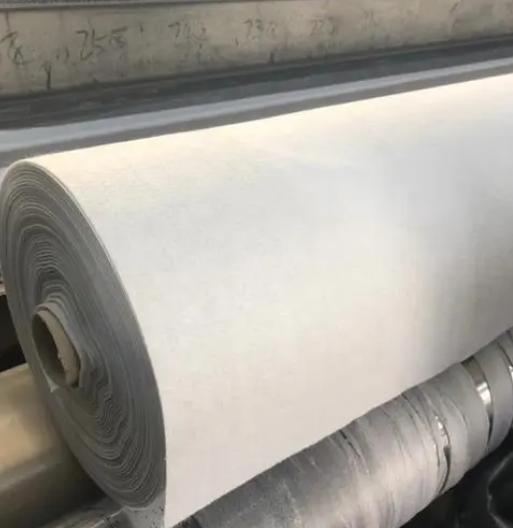- Understanding the Role of Geomembrane Liners in Waste Management
- Innovations in Geomembrane Liners for Water Management
- Geomembrane Liners: A Comprehensive Guide
- The Future of Geomembrane Liners in Civil Engineering
- Geomembrane Liners: Enhancing Landfill Stability
Manager:
WhatsApp:+86 177 0135 2670
Tel:+86 177 0135 2670
Email:marketing@okorder.com
Address:3rd Floor, No.2 Building, No.1 Sanlihe Road
When to use geomembrane?
Geomembranes are versatile materials used in various civil engineering, environmental, and industrial applications. Among the types available, composite geomembranes and high-density polyethylene (HDPE) geomembranes stand out for their durability, flexibility, and resistance to environmental factors. Understanding when to use these geomembranes is crucial for ensuring the success of projects requiring containment, barriers, or lining systems. Let's delve into the specifics of when each type is most suitable.

Composite Geomembrane: A Multilayer Solution
Composite geomembranes consist of multiple layers of different materials, each contributing specific properties to the overall performance. Typically, they include a geomembrane layer, often made of HDPE, combined with other materials like Geotextiles, geonets, or clay liners. This combination enhances their mechanical strength, puncture resistance, and hydraulic properties, making them ideal for a wide range of applications.
Landfills and Waste Containment
One of the primary applications of composite geomembranes is in landfill liners and caps. Their multilayer structure provides excellent containment for hazardous and non-hazardous waste materials. The geomembrane layer acts as a barrier against leachate migration, preventing contamination of soil and groundwater. The additional layers offer protection against punctures from sharp objects within the waste and ensure long-term integrity under varying environmental conditions.
Mining and Pond Liners
In mining operations, composite geomembranes serve as effective liners for tailings ponds, heap leach pads, and evaporation ponds. The robust construction of these liners provides reliable containment for aggressive chemicals, preventing their seepage into the surrounding environment. Their flexibility allows for easy installation over irregular terrain and resistance to settlement, maintaining structural integrity over time.
Secondary Containment Systems
Composite geomembranes are also essential components of secondary containment systems for industrial facilities storing hazardous materials. By installing these liners beneath storage tanks or around chemical storage areas, potential leaks or spills are contained, preventing environmental contamination and minimizing the risk of regulatory fines or legal liabilities. The combination of geomembrane and geotextile layers enhances resistance to punctures and provides additional cushioning against impact.
High-Density Polyethylene Geomembrane: Robust and Reliable
hdpe Geomembranes, characterized by their high molecular weight and density, offer exceptional strength, durability, and chemical resistance. These single-layer liners are widely used in applications where a robust barrier is required to contain liquids, gases, or solids, often in harsh environmental conditions.
Water Containment and Aquaculture
HDPE geomembranes are commonly employed in water containment projects such as reservoirs, lagoons, and aquaculture ponds. Their impermeable properties prevent seepage, ensuring efficient water storage and management. HDPE liners are particularly favored in aquaculture for their resistance to UV degradation and ability to withstand constant exposure to water without deterioration, providing a reliable barrier for fish ponds and shrimp farming operations.
Canal and Irrigation Lining
In agricultural settings, HDPE geomembranes are utilized for lining canals, reservoirs, and irrigation channels. By preventing water seepage into the surrounding soil, these liners help conserve water resources and maintain optimal soil moisture levels for crop growth. Their flexibility allows for easy installation even in areas with irregular terrain, reducing the need for extensive earthworks.
Gas Barrier Systems
In applications where containment of gases such as methane or radon is critical, HDPE geomembranes serve as effective barriers. They are commonly used in landfill gas collection systems, preventing the migration of harmful gases into adjacent structures or the atmosphere. The impermeable nature of HDPE ensures long-term integrity, minimizing the risk of gas leaks and associated hazards.

Conclusion
Whether the project calls for a multilayered solution like composite geomembranes or a single-layer barrier like HDPE geomembranes, choosing the right geomembrane is essential for ensuring the success and longevity of containment, lining, and barrier systems. Understanding the specific requirements of the application, including environmental conditions, chemical exposure, and structural considerations, is crucial in determining when to use composite geomembranes or HDPE geomembranes. With their proven performance and versatility, these geomembranes continue to be indispensable materials in civil engineering, environmental protection, and industrial applications worldwide."
- Previous:Who is the manufacturer of PVC geomembrane?
- Next:What are the mechanical properties of geomembrane?
-
2024-06-13Geomembrane is not plastic cloth






